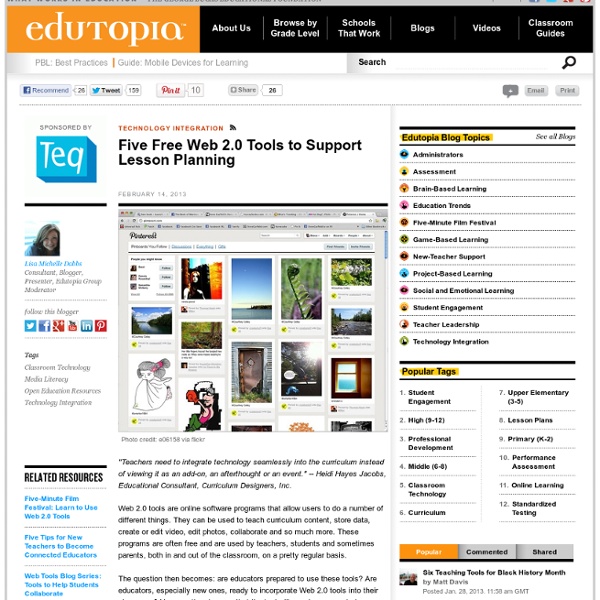Coursesales.com - Review, Pricing, Features, Comparison, Demo & Trial
Key Features of Coursesales.com Provides several alternative ways for users of your websiteHandles course listings across multiple regionsAllows courses to be priced in any currencyIntegrates with online payment providers Paperless processing of enquiries and registrationsFlexible workflow for your back officeRole based security and authorisation
Beyond Minecraft: Games That Inspire Building and Exploration
By Tanner Higgin, Graphite The success and popularity of Minecraft in and out of classrooms is no surprise. It’s one of the best examples of the potential of learning with games because it embraces exploration, discovery, creation, collaboration, and problem-solving while allowing teachers to shepherd play toward any subject area. But Minecraft is not the only game of this kind.
Best Tools to Create Animated Video
How to Make a Cartoon Yourself: Top 7 Animated Video Makers Compared Video production is not an easy and cheap matter. A short video for your YouTube channel or website may cost several thousand dollars if you address to professional video studios. No doubt, there are free and low-cost alternatives which can be easily mastered by any web user. A self-made cartoon or an animated video is one of the options. Animated Video Makers: Pros & Cons
10 Qualities of an Effective Community Manager
As more companies and more industries buy into the benefits of social media and community development, the number of job opportunities available for professionals with community-building skills also continue to grow. Companies are looking for professionals who can blend their skills to effectively deliver updates to a community, but also have the ability to tap into that community to collect feedback for a company to use for improving its product or delivering its message. While the job opportunities grow, so to do the number of professionals who include community skills on their resumes and profiles. On LinkedIn alone, the number of people who have added "Community Management" to their skills list is up 46% year-over-year.
7 Ways Teachers Use Social Media in the Classroom
Millennials live and breathe on social media, so teachers are learning how to incorporate the medium into the classroom successfully. In doing so, teachers not only encourage students to engage actively in the material, but they also provide online communities for students that might not exist for them in real life. But how are teachers infusing social media into their everyday lessons? We've highlighted several different examples and offered our own ideas on how to best engage students.
101 Web 2.0 Teaching Tools
Online tools and resources have made it easier for teachers to instruct students, and for students to collaborate with those teachers and with other students and parents. These “Web 2.0” teaching tools aren’t magical, but they may seem to defy definition at times since they save time, help you to stay organized, and often take up little space on a computer. Some of these applications are Web-based, which means that they can be accessed from any computer. The following list is filled with tools that will make a teacher’s, or those enrolled in the best online education programs, life easier. The categories are listed in alphabetical order and the links to each tool are also listed alphabetically within those categories. Aggregators
Outthink Inc. believes learning should be fun
Most of us who pursued careers in publishing did so because reading, in some way, impacted us as kids. But kids today live in a vastly changed world, and tablets have now taken over. One in four adults owns a tablet.
discussing Create
As many have noted before us, we’re in the midst of a technological revolution akin to Europe in the 15th century, when the printing press made the broad distribution of writing possible. Within the past few years, the technology for creating, distributing and mixing audio, video and text has become easy and inexpensive. During this brief period, Smarthistory.org has explored many free and inexpensive tools in conjunction with simple and effective pedagogical strategies based on conversation. The results have been exciting and can be seen in our website and our blog.
9 tools for creating great animations
Creating animations has always been considered as one of the most complex aspects of graphic design that requires specific software and technological expertise. It is a time-intensive activity that requires heavy software and high speed computers. However, over the past few years, the emergence of different online presentation and animation tools have simplified the process of creating animations. Most of these web-based tools are very easy to operate and can create animations that are perfectly suitable for everyday applications. Here we've gathered together some of the best... Read all our animation-related posts here



